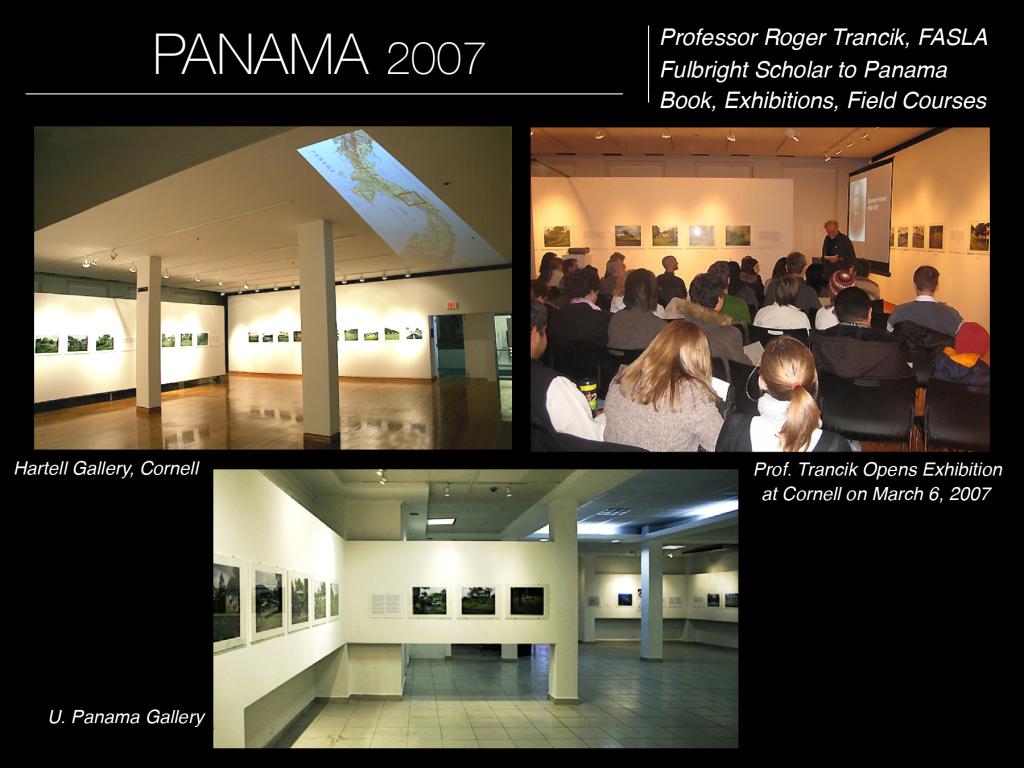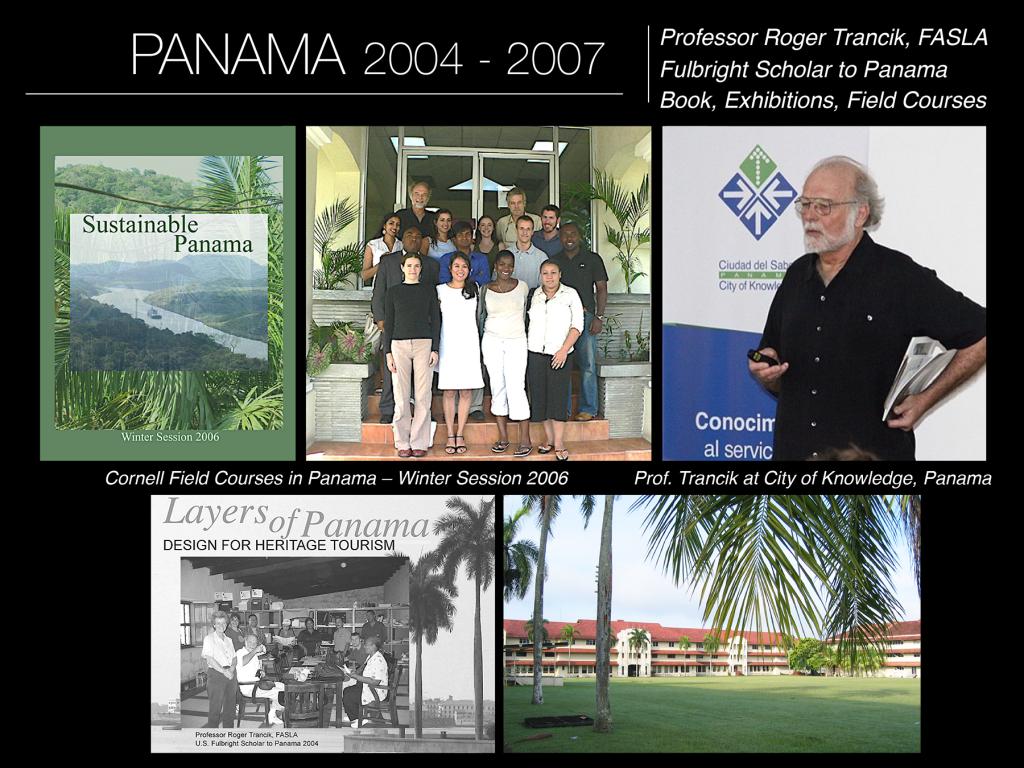Exhibit Reveals Urban Design of Panama Canal Area
images/provided
An exhibit of spectacular photos and a standing-room-only lecture introduced a Cornell audience to the urbanization of the Panama Canal Zone, which event organizers called “one of the largest publicly administered experiments in urban and regional planning in U.S. history.”
Titled “Tropical Garden Cities: The Influence of Clarence Stein on Urbanization at the Panama Canal,” the exhibition, curated by planning and landscape architecture professor Roger Trancik, consisted of photos by Sam Sweezy of the area, a 500-square-mile network of company towns, military bases, forest reserves, and industrial infrastructures. An explanatory narrative by alumnus Kurt Dillon (M.R.P. ’05) was also on display. Visitors to the March 5–10 exhibit in Hartell Gallery, were drawn to the lush tropical vegetation in the striking photos as well as to the examples of urban design and architecture.
A crowd packed the gallery on March 6 to hear “Global Garden Cities,” a talk by Robert Fishman, author of Bourgeois Utopias: The Rise and Fall of Suburbia. Fishman, a professor of architecture and urban planning at the University of Michigan, discussed the Panama Canal’s urban system in the context of planning history and such influential planners as Clarence Stein, Frederick Law Olmsted, and Jacob Crane. A roundtable discussion with Fishman, faculty, and students took place in the gallery the following morning.
The events were organized by Trancik and funded through AAP’s Clarence S. Stein Institute for Urban and Landscape Studies, and the Department of City and Regional Planning.







